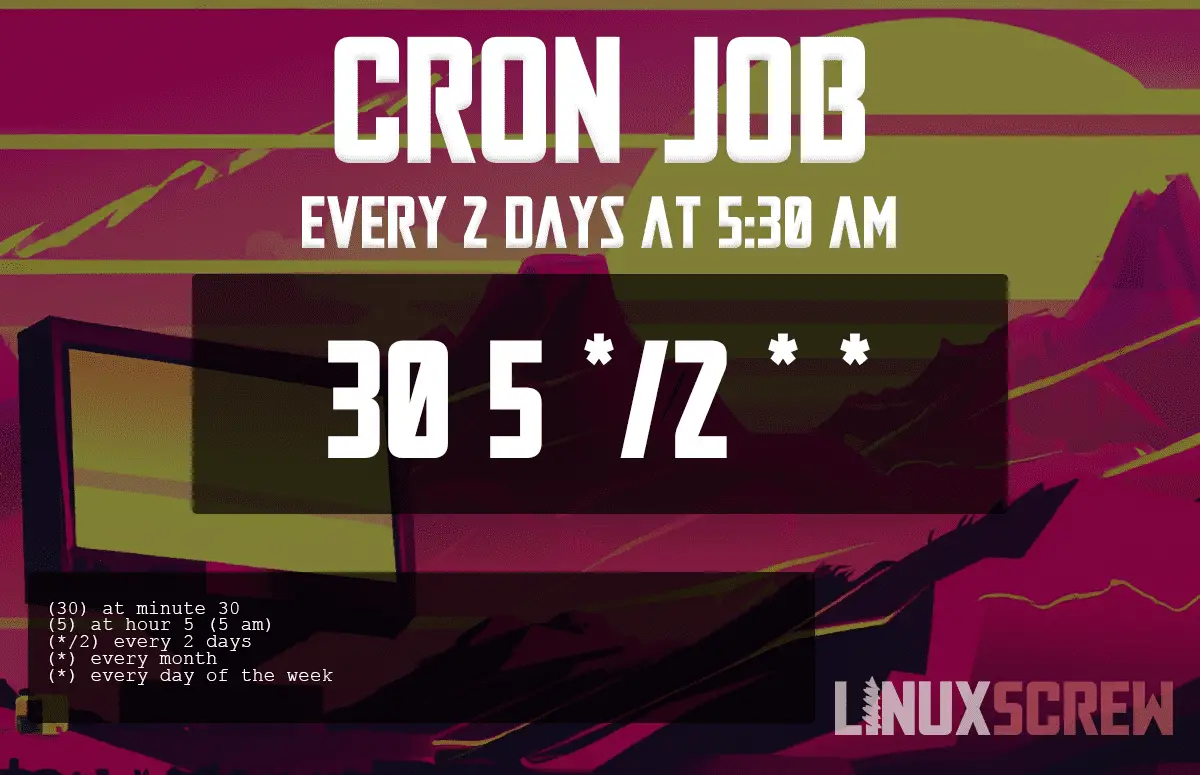This page will help you quickly and easily set up a cron job to run every 2 days at 5:30 am.
The Cron Job/Crontab
To have your task run at this frequency, use the following cron:
30 5 */2 * *
This cron command translates to the following (in Human-Readable format):
“Every 2 days at 5:30 am.”
What is a Cron Job & Crontab?
A cron job is a scheduled task that is typically executed by the operating system on a regular basis. Cron jobs are often used to perform maintenance or administrative tasks, such as backing up data or updating software.
Crontab files are stored in the “/etc/cron*” directories on most Linux systems. Each user has their own crontab file, and there is also a system-wide crontab file that can be used to schedule system tasks.
Cron Fields
Every cron job uses five fields. Here is an explanation of what each field does in this cron, which runs “every 2 days at 5:30 am“:
FUN FACT: When configuring a cron job, you can specify the minute, hour, day of the month, month and day of the week when it should run – this gives you a lot of flexibility in terms of when your task will be performed automatically!.
Use Cases
You might want to set up a crontab or cron job to run every 2 days at 5:30 am for several reasons, including:
- Sending a daily digest email to subscribers
- Generating a report of yesterday’s sales
- Archiving old log files
- Deleting temporary files that are more than 2 days old
Similar Cron Jobs
You might also want to run a crontab:
- every 1 day
- every 3 days
- every 10 days
- every 6 days
- every 5 days
- every 2 days
- every 5 days at 11:30 am
- every 6 days at 4:00 am
- every 8 days at 8:30 am
FUN FACT: Cron jobs are often used to perform regular maintenance tasks, such as running backups or sending out reports..
Wrapping Up
In this article, you learned how to set up a cron job that runs every 2 days at 5:30 am. Please share this page with friends and colleagues if you find it useful.
If you have any questions, please don’t hesitate to comment below.
If you are looking for cron jobs that run at certain minutes, hours, days, weekdays, or months, or if you are looking for miscellaneous cron jobs, then check out our relevant sections, or visit our cron job cheat sheet for a list of hundreds of popular cron jobs.

